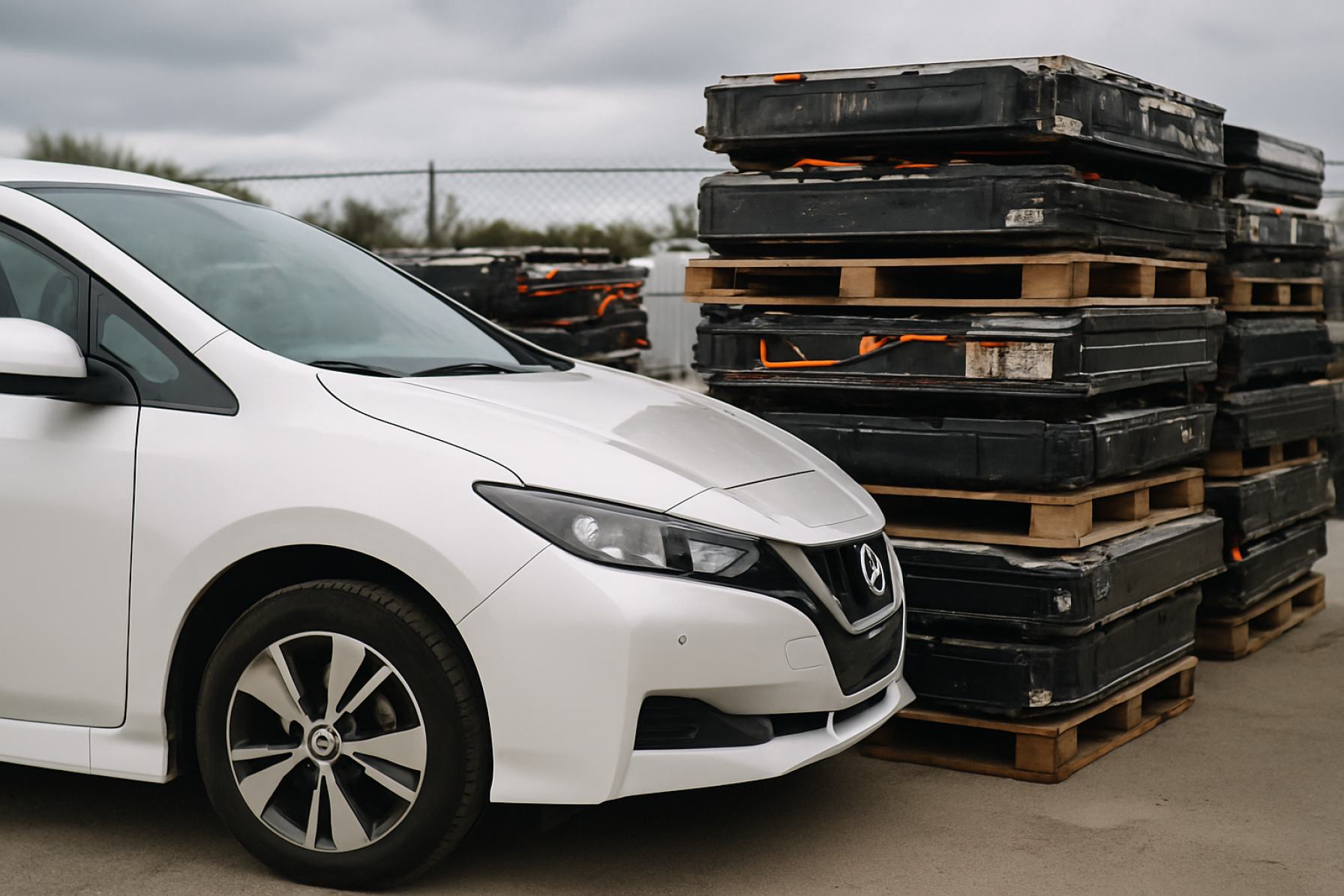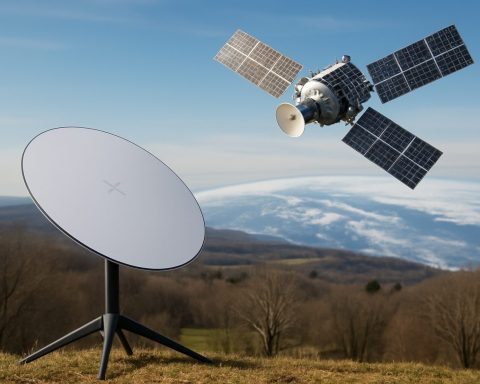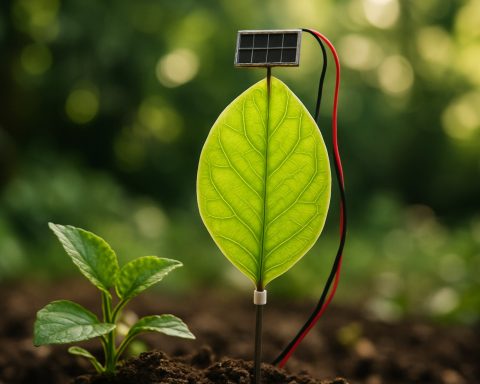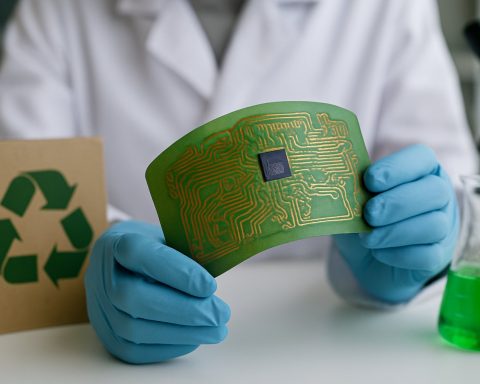- Electric vehicles (EVs) are rapidly gaining popularity, with nearly 20% of new cars sold now running on batteries.
- Lithium-ion EV batteries, made from critical minerals like lithium, cobalt, and nickel, often retain up to 80% capacity after a decade of use, enabling second-life applications.
- Used EV batteries can be refurbished for other vehicles or serve as backup power for homes, hospitals, and renewable energy storage.
- Recycling processes recover valuable minerals from end-of-life batteries, reducing the need for new mining and supporting a circular supply chain.
- Scaling up battery recycling could meet a significant portion of future mineral demand, ease environmental pressure, and create new economic opportunities.
- Smart reuse and recycling strategies are essential for a sustainable, fair, and clean-energy future.
Electric vehicles (EVs) are cruising into the mainstream with unprecedented speed, transforming city streets and countryside highways alike. Nearly 20% of all new cars sold worldwide now run on batteries, and forecasts point to 20 million electric and hybrid vehicles hitting the roads in 2025. As the world zooms toward a cleaner future, another silent question hums beneath the hood: What becomes of these batteries when the journey is over?
Born to Power, Built to Endure
Lithium-ion batteries, the beating heart of modern EVs, are marvels of engineering. They’re constructed with rare minerals—lithium, cobalt, nickel, graphite—that are mined in only a handful of countries, fueling both dreams of a post-carbon future and concerns over resource scarcity, environmental degradation, and human rights. Despite popular belief, an EV battery’s “end-of-life” is far from a dead end. Most retain up to 80% of their original capacity after a decade or more on the road—enough energy to light new possibilities.
Batteries Get a Second Life
When electric vehicles retire, their batteries begin a new chapter. Those still brimming with capacity can be refurbished and fit into other vehicles or stored as emergency power for homes, hospitals, and factories. Imagine a hospital seamlessly switching to ex-EV batteries when the grid falters, or a solar plant saving its surplus in what was once a car’s engine. The potential is as vast as a highway at dawn.
Medium-capacity batteries find purpose in stationary storage solutions, stabilizing the grid, backing up renewable energy, or even powering off-grid communities. For those batteries worn from a thousand cycles, a different transformation awaits: the recycling line.
Mining the Urban Underground
Recycling old batteries is no mere matter of melting and pouring. First, batteries are shredded into a grainy “black mass”—a cocktail of lithium, cobalt, nickel, and graphite, laced with plastics and metals. Advanced processes separate every element, many of which can be fed directly back into new battery production.
Europe has recognized this gold mine within its borders. By 2030, recycled batteries and factory scraps could satisfy a quarter of European demand for cobalt, and nearly a sixth for nickel and manganese. That’s enough recovered material to build as many as 15 million future EVs by 2040. Across the Atlantic, innovators like Li-Cycle, backed by the U.S. Inflation Reduction Act, are scaling up operations in North America and Germany—showing the world that a greener, circular supply chain is within reach.
Why It Matters
Critical minerals remain a geopolitical flashpoint. Over half the world’s nickel comes from Indonesia; two-thirds of cobalt is sourced from the Democratic Republic of Congo, often under grim labor conditions. Recycling alleviates the pressure to mine more, protects delicate environments, and gives communities breathing space. Governments are waving in new policies and incentives. More skilled technicians are needed, and costs remain a challenge, but the economic and ecological promise is undeniable.
The next time you see an electric car gliding silently down the street, picture not just the journey ahead, but the hidden voyage awaiting its battery. Reuse, repurpose, recycle—the future of clean energy depends as much on what we recover as on what we invent.
Key takeaway: EV batteries aren’t simply discarded at the end of their road life. With smart recycling and creative repurposing, what once powered motion can fuel a cleaner, fairer energy future—proving that innovation isn’t just about building anew, but making the most of what we already have.
For more insights into clean technology and the future of energy, visit Bloomberg or Reuters.
The Secret Life of EV Batteries: What Really Happens After Their Road Trip Ends
Electric vehicle (EV) batteries have taken center stage in the race toward a sustainable future. As the source article highlights, they’re not only powering the clean mobility transition but are also at the heart of debates over resource security, recycling, and circular economy. Let’s go deeper and answer the burning questions: what actually happens to these batteries, what are the real industry challenges and opportunities, and how can consumers and businesses prepare for this battery-powered revolution?
Beyond the Basics: Key Facts About EV Battery Lifecycle
1. How Long Do EV Batteries Really Last?
Modern lithium-ion EV batteries are engineered for durability. Most manufacturers offer 8-10 year warranties, and real-world studies suggest many can last 12-15 years or 200,000+ miles before “retirement” from vehicle use ([source](https://www.reuters.com)). Interestingly, even after this point, batteries often retain more than 70-80% of original capacity.
2. What Are the Latest Second-Life Applications?
Beyond emergency backup for buildings and grid stabilization, repurposed EV batteries are now being used in:
– Microgrids for rural electrification (e.g., off-grid villages in Africa and Asia)
– Data center backup systems (stable, long-lasting energy supply)
– Commercial warehouse power banks (shaving peak usage costs)
– E-bike and low-speed vehicle conversions
3. How Efficient is Battery Recycling?
New “hydrometallurgical” and “direct recycling” techniques can recover over 95% of critical materials like lithium, cobalt, and nickel, greatly reducing environmental impact versus traditional mining. For comparison, lead-acid car battery recycling rates exceed 99%—lithium-ion tech is quickly catching up.
4. Is This Industry Safe and Secure?
Environmental and worker safety are concerns. Regulatory agencies require specialized handling, as faulty batteries can catch fire or pass toxic materials into streams. Europe’s Battery Directive (updated 2023) will require traceability, safe disposal, and minimum recycled content in new batteries.
Market Insights & Trends: What’s Coming Next?
EV Battery Recycling Boom
The global EV battery recycling market is projected to hit $18 billion by 2030 (Allied Market Research). China, the EU, and the US are building massive recycling plants. Bloomberg confirms that North America’s Li-Cycle and Redwood Materials, among others, are scaling rapidly.
Regulations Are Expanding
The EU, California, and Japan are rolling out stricter rules requiring automakers to collect used batteries, set recycling quotas, and publish supply chain records. The US Inflation Reduction Act provides billions in incentives for domestic recycling and battery manufacturing.
Sustainable Battery Innovation
Automakers and startups are testing new chemistries (like LFP) that use less cobalt and nickel, and “solid-state” batteries that promise longer lifespans and better recyclability.
Common Questions Answered
Q: Can I recycle my own EV battery?
No. Due to high voltage and toxic chemicals, EV battery recycling is for certified facilities only. Most dealers and manufacturers offer take-back programs, sometimes with cash or service credits.
Q: Do “second-life” batteries pose safety risks in homes?
Properly repurposed and maintained, they’re as safe as other home backup systems. Reputable services provide warranties and certifications.
Q: Is buying an EV still green if a battery must eventually be recycled?
Yes. Studies by the International Energy Agency and MIT confirm the carbon footprint of EVs (even when accounting for battery recycling) remains much lower than gasoline vehicles over their full lifecycle.
Q: Which companies are leaders in EV battery recycling?
Redwood Materials, Li-Cycle, and Umicore are top players. Automakers including Tesla, Nissan, and Volkswagen have their own recycling partnerships.
EV Battery Recycling: Pros & Cons Overview
Pros:
– Drastically reduces need for newly mined materials
– Cuts e-waste and pollution risk
– Can boost local economies and create green jobs
– Supports clean energy grid by enabling low-cost stationary storage
Cons:
– High initial investment for recycling plants and logistics
– Technical challenges with recovering some low-value materials
– Variability in battery designs complicates standardization
– Market still maturing—widespread infrastructure not yet global
Industry Controversies & Limitations
– Human rights and environmental abuses still plague mineral extraction in regions like the DRC and Indonesia.
– Not all recycled batteries are of “battery grade” quality; some, like plastics, may be downcycled.
– Standardization lag: Carmakers use different battery formats, hampering recycling efficiency.
Tech Specs, Pricing & Real-World Use
– Typical EV battery: 30-100 kWh capacity; weighs 400-900 kg (880-2000 lbs)
– New battery cost: $100-150/kWh for large buyers (prices falling by ~10% per year)
– Recycling value: $1,000+ in recovered metals per pack, depending on chemistry and market prices
Quick How-To: What Should EV Owners Do?
1. Register your vehicle with your manufacturer’s battery recycling program.
2. At end of EV life, contact a certified dealership or recycler—never attempt home removal.
3. If eligible, consider swapping to a new battery to extend vehicle life (some automakers offer replacements at reduced rates).
4. Watch for incentives: Local utilities and governments may pay for battery “take-back,” or offer credits for turning in your old battery.
Actionable Recommendations & Life Hacks
– Ask car dealers about buyback or recycling programs before purchase.
– If shopping for backup energy, check if the system uses repurposed EV batteries—can be cheaper and greener!
– Stay updated: Local rules on battery disposal and incentives are changing fast—check government and Reuters for latest info.
– Consider future resale value when buying an EV—models with widely recycled batteries retain value better.
Conclusion: Rethink, Reuse, Recharge the Future
The shift to electric vehicles is bringing profound change—but it’s what happens after the final mile that could define our success in building a cleaner, fairer world. With smart design, strong regulations, and continued innovation, EV batteries can serve not just years on the road, but decades powering new solutions. As consumers, choosing responsible recycling, supporting greener technologies, and demanding transparency from carmakers can all help drive the circular economy forward.
Want more expert analysis and EV industry news? Visit Bloomberg and Reuters for real-time updates.











